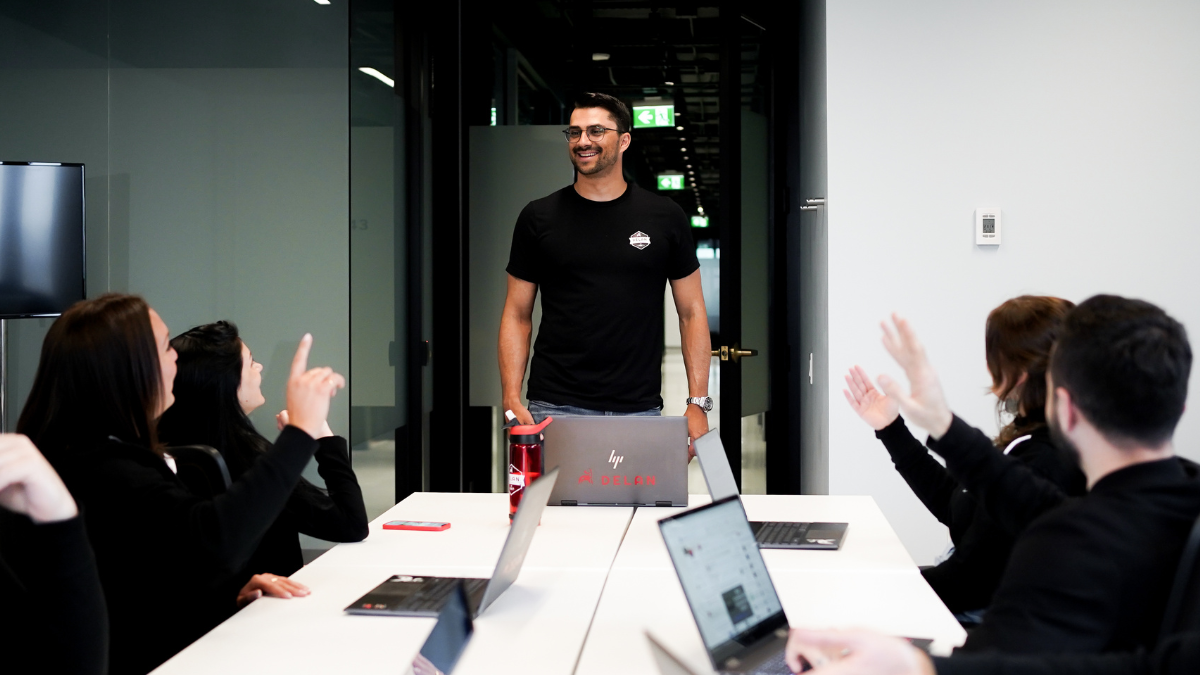Recruitment – A seduction’s story

You stand in front of the mirror, preparing for a long-awaited interview for your dream job. You put on a confident smile before starting. Upon arrival, you’re greeted by a human resources advisor and your future manager. However, you notice a neglected decor, disturbing noises, and a lackluster welcome. You then wonder: is this really the type of company where you want to grow professionally?
In today’s highly competitive technology job market, every detail of the seduction process holds paramount importance, whether you’re a candidate or an employer.
➡️ The Candidate
Standing out in the recruitment process is crucial for every candidate, whether in times of talent scarcity or not. Adequate preparations can increase your chances of success by attracting the recruiter’s and/or manager’s attention.
👉🏼 Hygiene and clothing:
During in-person interviews, you’ll likely be sharing your space with a representative from the employer. Therefore, maintaining good personal hygiene is essential, as it sends a positive message about your attention to detail. Excessive perfume, for example, can be harmful, especially if the recruiter has a sensitive nose. As for attire, adapt to the company: a suit/tie for a bank, a clean sweater and jeans for a video game company.
👉🏼 Know your background:
An interview is similar to “speed dating,” where you must capture the other party’s interest within minutes, so they consider contacting you again later. Make sure you know your professional history and the key projects you’ve worked on. This will boost your confidence, and your body language will be more positive.
👉🏼 Know your limits:
In technology, as in all spheres of life, it’s impossible to know everything. Therefore, it’s important to recognize your limits and understand how you can be valuable to your future employer. Be transparent: this can lead to training opportunities or job adaptation. Transparency is beneficial for all parties involved.
💡 Also, check out our 8 tips for a successful interview!
➡️ The Employer
It’s essential for the employer to ensure an impeccable candidate experience at every stage of the recruitment process, from job posting to welcoming and integrating a new employee. This will differentiate you from the competition and optimize your chances of attracting talent.
👉🏼 Relevant job descriptions:
Embellished job descriptions have become increasingly popular in recent years. Recognizable by their length and often exhaustive and random list of required technologies, these descriptions can deter good potential candidates due to their lack of precision. Often too vague, they seem to have been written without attention to detail, which significantly harms the talent acquisition process.
👉🏼 Simplified career section:
Navigating a website’s career page can sometimes be tedious and frustrating due to bugs, duplicates, redundant information, or excessively long forms to fill out. Therefore, it’s essential for a company to simplify this process by centralizing the requested information via the career tab or CV submission. A streamlined approach will reduce frustration and encourage more applications through your website.
👉🏼 Quality work environment:
Provide workspaces that reflect the quality of work you expect from your employees. Additionally, you’ll gain productivity!
👉🏼 Clear context:
It’s important to clearly indicate the context of the position to the candidate, as they will be informed after a few days within your team anyway. Even in the case of talent replacement within your company, it’s beneficial to clearly explain the expectations you have for the new recruit from the start.
👉🏼 Active listening:
Although this step may seem simple, it can often be contentious. If a candidate’s aspirations in two to five years don’t align with what you can offer, it’s important to be transparent about it to avoid future frustration. The candidate, even if perfect for the position, will appreciate it and can make an informed decision.
👉🏼 Attentive follow-up:
Make sure to provide updates to all candidates, even those who aren’t selected. Although this may seem obvious to some, unfortunately, it’s not unanimously agreed upon and can have long-term detrimental consequences, risking permanently tarnishing your company’s reputation. Therefore, maintain constant follow-up with your candidates!
💡 Also, check out our tips for reducing your recruitment timeframes!
If you need help recruiting the best talents for your company, do not hesitate to call on a specialized recruitment firm that can assist you in this process.
In conclusion, whether you’re a candidate looking to stand out in the technology market or an employer seeking exceptional talent, it’s crucial to recognize the importance of every step of the recruitment process. For candidates, this means preparing adequately, knowing your strengths and limitations, and above all, staying authentic. For employers, this involves ensuring an impeccable candidate experience, starting with precise job descriptions, simplified application processes, and attentive follow-up at every stage of the process.
Contact us today to discover how the DELAN team can help you find the best IT talents or the job of your dreams in the field of information technology in Quebec.
📧 info@delan.ca ☎️ 514-744-3000



